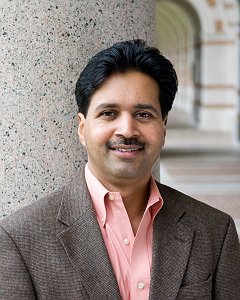Why the End-Game for Moore's Law will be driven by a Compiler Renaissance?
It is widely recognized that a major disruption is under way in computer hardware as processors strive to extend the end-game of Moore’s Law by an increased reliance on heterogeneity and customization to build more energy-efficient processor units, memory hierarchies, and communication structures. Unlike previous generations of hardware evolution, these “extreme scale” systems will have a profound impact on future software. In this talk, we summarize the software challenges for extreme scale computing, with a focus on the role of compilation in future software stacks. These challenges anticipate a new vision for compilers that goes beyond their traditional role of mapping a specific program to a specific hardware platform, to a world view in which compilers guide both the selection of algorithms in an application and the customization of hardware components to implement those algorithms. From this perspective, advances in compiler technology will include: 1) foundations for transforming programs with that can express a wide range of behaviors in the parallelism-locality-energy-approximation space, 2) development of new code optimizations for such programs on future hardware, 3) the ability to mine code/data transformations from hand-optimized codes, and 4) a wide range of performance prediction techniques that can be used to guide hardware selection, configuration, and mapping.
Bio:
Vivek Sarkar is the E.D. Butcher Chair of Engineering and Professor of Computer Science at Rice University. He currently leads the Habanero Extreme Scale Software Research Laboratory at Rice, and is PI of the DARPA-funded Pliny project on “big code” analytics. Prior to joining Rice in July 2007, Vivek was Senior Manager of Programming Technologies at IBM Research. His research projects at IBM included the X10 programming language, the Jikes Research Virtual Machine for the Java language, the ASTI optimizer used in IBM’s XL Fortran product compilers, and the PTRAN automatic parallelization system. Vivek became a member of the IBM Academy of Technology in 1995, the E.D. Butcher Chair in Engineering at Rice University in 2007, and was inducted as an ACM Fellow in 2008. Vivek has been serving as a member of the US Department of Energy’s Advanced Scientific Computing Advisory Committee (ASCAC) since 2009, and on CRA’s Board of Directors since 2015.
Vivek Sarkar is Professor of Computer Science and the E.D. Butcher Chair in Engineering at Rice University. He conducts research in multiple aspects of parallel software including programming languages, program analysis, compiler optimizations and runtimes systems for diverse parallel platforms. He currently leads the Habanero Extreme Scale Software Research Laboratory at Rice University, and is PI of the DARPA-funded Pliny project on “big code” analytics. Prior to joining Rice in July 2007, Vivek was Senior Manager of Programming Technologies at IBM Research. His responsibilities at IBM included leading IBM’s research efforts in programming model, tools, and productivity in the PERCS project during 2002- 2007 as part of the DARPA High Productivity Computing System program. His prior research projects include the X10 programming language, the Jikes Research Virtual Machine for the Java language, the ASTI optimizer used in IBM’s XL Fortran product compilers, the PTRAN automatic parallelization system, and profile-directed partitioning and scheduling of Sisal programs. In 1997, he was on sabbatical as a visiting associate professor at MIT, where he was a founding member of the MIT Raw multicore project. Vivek became a member of the IBM Academy of Technology in 1995, and was inducted as an ACM Fellow in 2008. He holds a B.Tech. degree from the Indian Institute of Technology, Kanpur, an M.S. degree from University of Wisconsin-Madison, and a Ph.D. from Stanford University. Vivek has been serving as a member of the US Department of Energy’s Advanced Scientific Computing Advisory Committee (ASCAC) since 2009, and on CRA’s Board of Directors since 2015.
